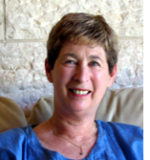Village of Secrets by Caroline Moore; Harper Perennial, 2015
By Dorothea Shefer-Vanson

MEVASSERET ZION, Israel — Based on extensive historical research, personal interviews and visits to the places concerned, Caroline Moore has produced an astounding account of life on a remote, mountainous plateau perched on France’s Massif Central, where the residents of villages, hamlets and isolated farms worked together in Nazi-controlled France to rescue hundreds if not thousands of people, mainly Jewish children and members of the Resistance.
The largely rural Vivarais-Lignon plateau enjoys a climate considered to be healthy during the summer months, resulting in the existence there of several hotels, children’s homes and convalescent centres for visiting tourists. In the winter, however, it was more or less cut off from the rest of the country by deep, long-lasting snow and its mountainous terrain. These conditions enabled the villagers to provide sanctuary for people – and especially children – seeking to evade capture and deportation to concentration camps.
Most of the inhabitants of the region were devout Protestants, many of them descendants of the Huguenots who had themselves been persecuted in sixteenth-century France. Some of them belonged to obscure Christian sects, such as the Darbyists and the Ravenists, which were in various ways akin to the Quakers and Amish, with special clothing and an austere life style. Led by pacifist pastors, the inhabitants of the local villages, Chambon sur Lignon, Mazet sur Voy, Riou as well as hamlets and individual farms, took in and cared for dozens of Jewish children brought to the region, whether by individuals or by the Jewish and Christian organisations (OSE and Cimade) involved in their rescue.
The author describes in harrowing detail the conditions in the various detention camps in France, such as Gurs at the foot of the Pyrenees, Drancy near Paris and Venisseux near Lyons, from where trains full of Jews were sent to the concentration camps.. Despite assurances to the contrary, after 1942 Jews were hunted down with as much rigour in the part of France controlled by the Vichy collaborationist government, as in Nazi-controlled northern France.
The systematic deportation of France’s Jewish population, starting with the ‘foreign Jews,’ who had fled from other parts of Europe, and continuing with the ‘French Jews,’ persisted till the end of the war. Those individuals and groups who had managed to make their way to the plateau were taken in by institutions and families. In some cases their names and identities were changed while in others they were hidden in basements, barns and lofts, or enabled to find shelter in the nearby forests. Eventually many of them were helped to cross the border into Switzerland, a journey which involved considerable danger for the victims and their helpers. Moore describes one such escape in which a girl’s long hair was caught in the barbed-wire fence. The teenager who stayed behind to help disentangle her hair became her husband many years later.
When the Germans required able-bodied French men to enlist for work in Germany many of them fled to the plateau. Among the Jews in hiding were expert forgers who were able to produce false identity papers and medical certificates, enabling both Jews and non-Jews to evade capture. Members of the Maquis also found shelter there. The individuals who sheltered the Jews were inspired by the pacifist sermons preached by the local pastors, some of whom paid dearly for their refusal to cooperate with the occupying forces. At a time when food was scarce and rationing prevailed throughout France, the farmers of the region supplied extra food to the homes where Jewish children were being sheltered.
After liberation the work began of restoring the names and identities of the Jewish children, many of whom had little or no recollection of their original families. A large number of them were now orphans, and the work of returning them to their surviving relatives was often problematic. Some of the older children preferred to join the Jews in what was then Palestine in order to help establish a Jewish state.
There is no doubt that France’s record during its occupation by the Germans is far from glorious, but here and there there were small rays of light, among them the people of the Vivarais-Lignon plateau. In fact, the village of Chambon-sur-Lignon is one of only two villages worldwide to be awarded the title of Righteous Among the Narions. by Yad Vashem.
*
Dorothea Shefer-Vanson is an author and freelance writer based in the Jerusalem suburb of Mevasseret Zion, Israel.